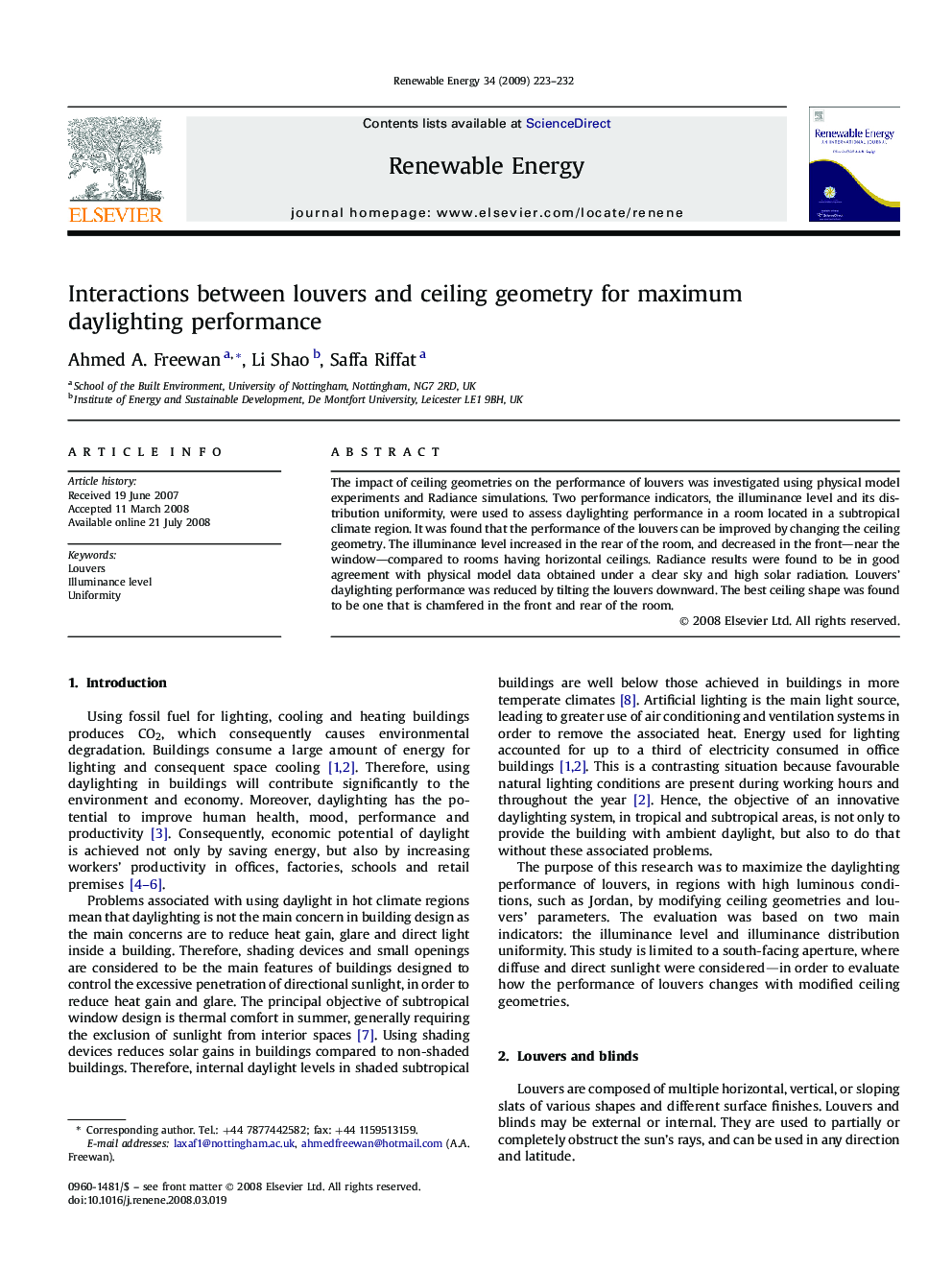| Article ID | Journal | Published Year | Pages | File Type |
|---|---|---|---|---|
| 302589 | Renewable Energy | 2009 | 10 Pages |
The impact of ceiling geometries on the performance of louvers was investigated using physical model experiments and Radiance simulations. Two performance indicators, the illuminance level and its distribution uniformity, were used to assess daylighting performance in a room located in a subtropical climate region. It was found that the performance of the louvers can be improved by changing the ceiling geometry. The illuminance level increased in the rear of the room, and decreased in the front—near the window—compared to rooms having horizontal ceilings. Radiance results were found to be in good agreement with physical model data obtained under a clear sky and high solar radiation. Louvers' daylighting performance was reduced by tilting the louvers downward. The best ceiling shape was found to be one that is chamfered in the front and rear of the room.
